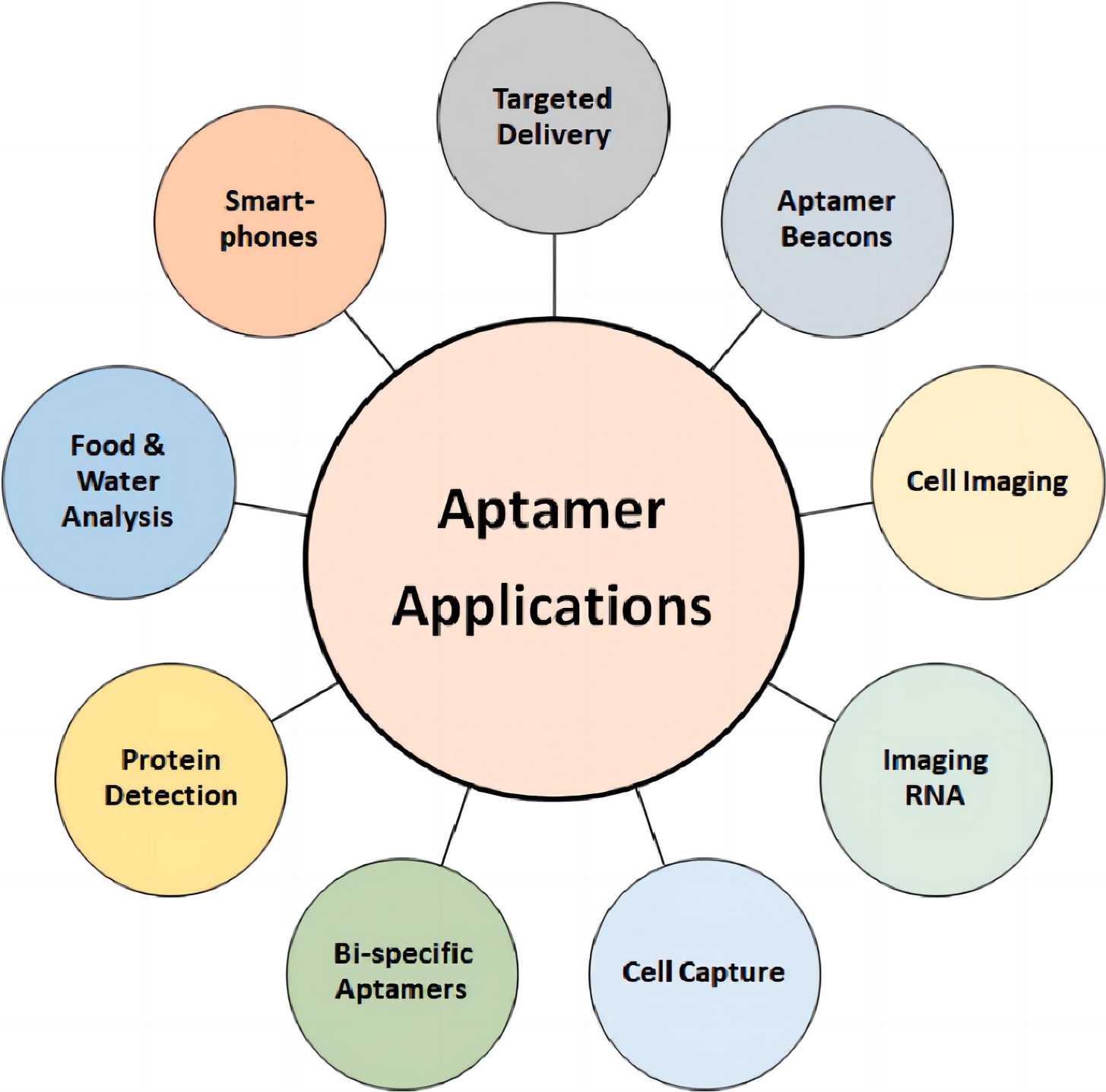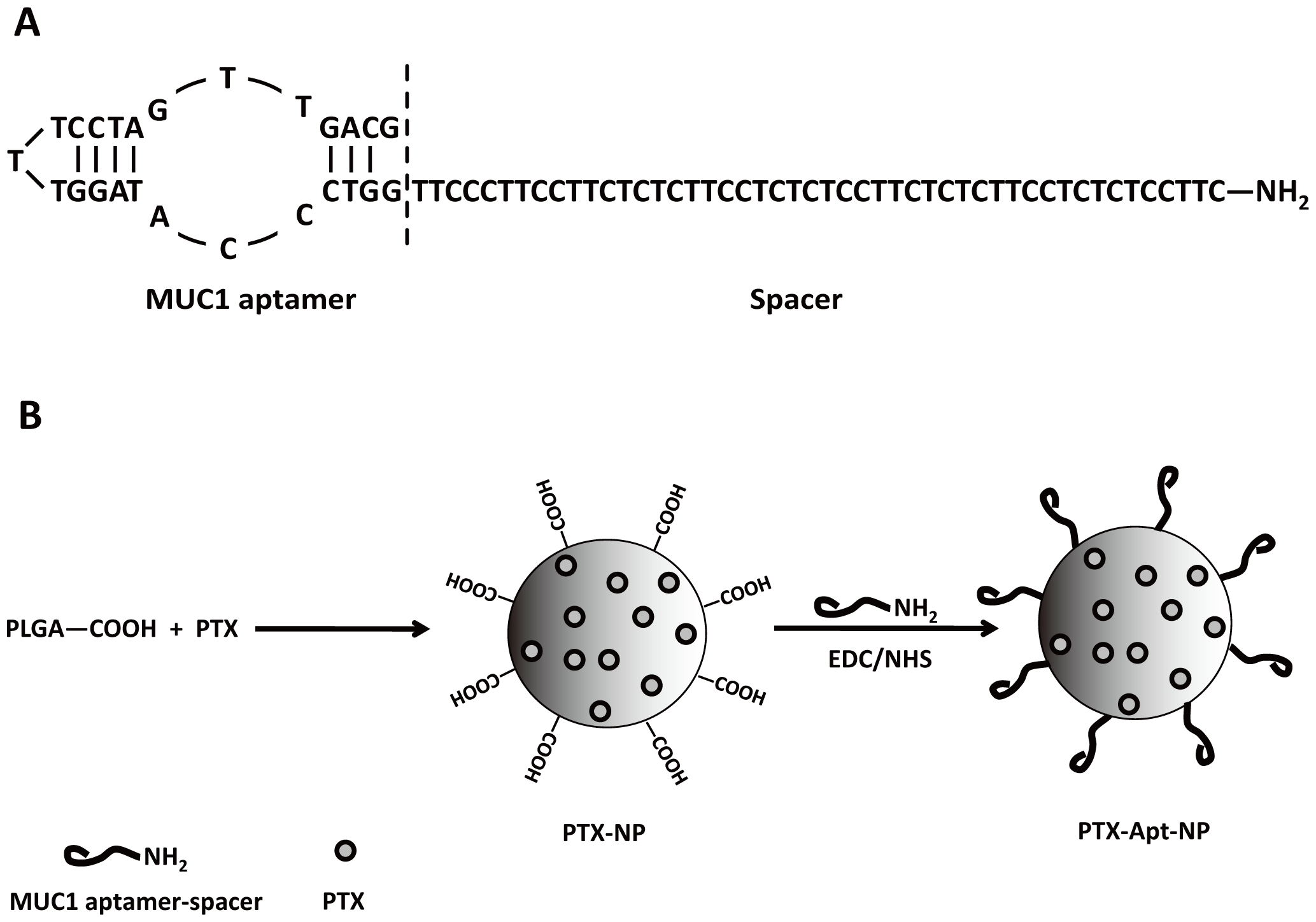Background of Aptamer-Nanoparticles Conjugates
In recent years, nanoparticles-based targeted drug delivery has been widely investigated and applied for the development of cancer therapy due to their excellent drug loading capacity, enhanced permeability and retention, as well as higher bioavailability. Nanoparticles are drug carriers with diameters ranging from 1-100 nm, which can be made from various kinds of materials, commonly including liposomes, polymers, dendrimers, and so forth. By encapsulate therapeutic drug molecules into the nanoparticles, the nanoparticle carriers can also overcome the limitations of conventional therapeutic drugs, such as poor solubility, unfavorable pharmacokinetics, and drug distribution.
To achieve higher specificity and tumor-target effect, conjugating nanoparticles to targeting agents have been tried, such as monoclonal antibodies and peptides. Aptamers, small oligonucleotides with unique 3-dimensional structures and high affinity to targets, have emerged as novel targeting agents that conjugate to nanoparticles for their target drug delivery. Compared with commonly used antibodies, aptamers are superior in stability, affinity, specificity, immunogenicity, and production cost. Currently, aptamer-nanoparticles conjugates are promising approaches for targeted drug delivery and therapeutic applications.
 Fig. 1 Applications of aptamer.1
Fig. 1 Applications of aptamer.1
Application of Aptamer-Nanoparticles Conjugates
Current published aptamer-nanoparticles conjugate studies mainly focused on cancer treatment. In 2004, Farokhzad has synthesized an aptamer-nanoparticles conjugate by conjugating an RNA aptamer against prostate-specific membrane antigen to the polylactic acid-polyethylene glycol nanoparticles containing rhodamine-labeled dextran drug. This synthesized aptamer-nanoparticles conjugate could more efficiently target and be absorbed by prostate-specific membrane antigen-expressing LNCaP epithelial cells. Later in 2006, an A10 2’-fluoropyrimidine RNA aptamer- docetaxel encapsulated nanoparticles conjugate was demonstrated with a significantly increased treatment efficacy and reduced toxicity for prostate cancer in vivo.
Additionally, a novel aptamer-nanoparticles conjugate was developed by conjugating a MUC1 specific aptamer to poly lactic-co-glycolic-acid nanoparticles loaded with paclitaxel through a DNA spacer. Compared with non-targeted drug nanoparticles, this conjugate remarkably enhanced the drug delivery and cytotoxicity to MUC1+ cancer cells in vitro, showing a stable drug release profile.
 Fig.2 Construction of the S2.2-spacer aptamer and PTX-Apt-NPs. (Yu, 2011)
Fig.2 Construction of the S2.2-spacer aptamer and PTX-Apt-NPs. (Yu, 2011)
Chose Creative Biolabs for Your Aptamer-Nanoparticles Conjugates Development
Recently, aptamers and their related conjugate have attracted much attention from many scientists owing to the superior features over antibodies. Currently, aptamer conjugates have been widely applied for new drug discovery, drug delivery, and disease diagnostic and therapeutic. Adhering to the concept of striving for human health, Creative Biolabs has made great achievements in the field of aptamer development and won good reputations in service providing. We provide one-stop custom services for aptamer-nanoparticles conjugate development based on a powerful platform and abundant experience.
If you are interested in our services, please do not hesitate to contact us directly for more details.
References
-
Zon, Gerald. "Recent advances in aptamer applications for analytical biochemistry." Analytical biochemistry 644 (2022): 113894.
-
Yu, Chenchen, et al. "Novel aptamer-nanoparticle bioconjugates enhances delivery of anticancer drug to MUC1-positive cancer cells in vitro." PloS one 6.9 (2011): e24077.
Related Product
Questions & Answer
A: Aptamer-nanoparticle conjugates are developed to combine the target recognition capabilities of aptamers with the unique properties of nanoparticles, such as high stability, large surface area, and tunable surface chemistry. This combination enables enhanced targeting, delivery, and therapeutic effects in various biomedical applications.
A: Different types of nanoparticles can be used, including gold nanoparticles, magnetic nanoparticles, quantum dots, liposomes, and polymeric nanoparticles. The choice of nanoparticle depends on the specific application and desired properties, such as stability, biocompatibility, and payload capacity.
A: Conjugation can be achieved through various methods, such as covalent binding, physical adsorption, or bioconjugation techniques. The specific method depends on the characteristics of the aptamer and nanoparticle, as well as the desired stability and functionality of the conjugate.
For Research Use Only.
Related Sections:

 Fig. 1 Applications of aptamer.1
Fig. 1 Applications of aptamer.1
 Fig.2 Construction of the S2.2-spacer aptamer and PTX-Apt-NPs. (Yu, 2011)
Fig.2 Construction of the S2.2-spacer aptamer and PTX-Apt-NPs. (Yu, 2011)